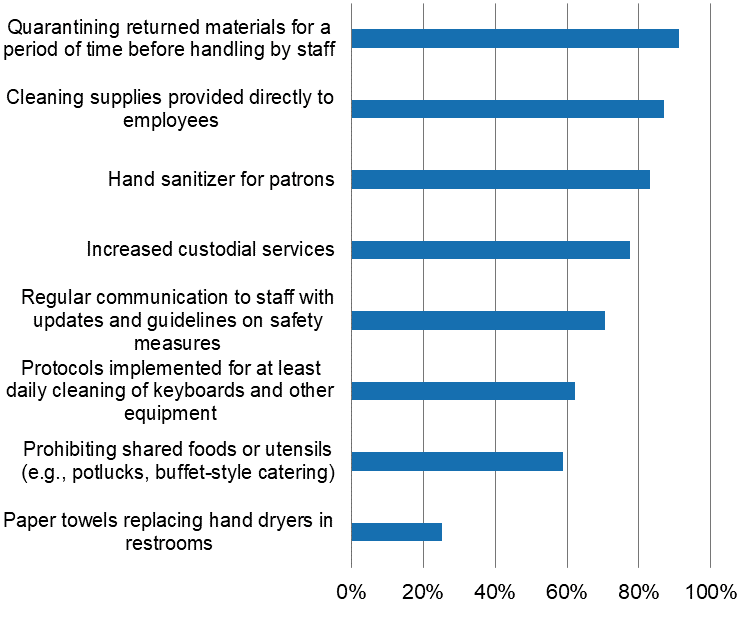Indications of the New Normal
A (Farewell) Fall 2020 Update from the Academic Library Response to COVID-19 Survey
This is the fourth and final analysis of results from the Academic Library Response to COVID-19 survey, which we deployed on March 11 in order to gather as-it-happens data from and for the academic library community. Libraries were encouraged to not only log their current status but to also come back to retake the survey as circumstances evolved.
In past posts, we have presented an analysis of the first 24 hours of responses, a comparison of those findings with an analysis of the responses in the subsequent 48 hours, and an analysis of changes in responses from first submission to the most recent update for the institutions that returned to the survey in the first ten days.
In late September, we invited previous respondents to submit a final update to the survey and received 214 additional responses, primarily from four-year institutions. In this report, we analyze these responses as a group as well as the response of each institution relative to its previous response, the majority of which were submitted in late March through April.
In these responses, we begin to see the parameters of what has been termed “the new normal”—that is, the basis from which libraries will eventually build back. While the majority of library buildings are now open to some extent, many services are still primarily being delivered virtually and some staff are continuing to work remotely. Safety measures have been widely adopted and access to collections is largely digital or staff-mediated.
Though the pandemic continues, the need for in-the-moment updates has subsided. We are grateful to the 875 libraries that have contributed to the project and to the many people who helped to promote the survey, disseminated the results, and shared the impact of the data with us. This participatory research project would not have been possible without the engagement of the larger community. As we bring the data collection to a close, we can only say: thank you!
Library building access
When we last reported survey results in March, nearly all library locations were completely closed as institutions temporarily suspended in-person instruction and pivoted online. Now, roughly half of the participating physical library locations are open but with restricted building access and/or limited hours. An equal share of respondents—roughly one in five—reported either that their libraries are still fully closed or that they are fully open with pre-pandemic hours and location access. About three-quarters have discontinued or restricted access to facilities for the general public.
Safety measures
A variety of safety, disinfection, and cleaning protocols have now been implemented, the most common being the quarantining of returned materials for a specific period of time before staff handle them. This is a notable shift as quarantining materials was one of the least common strategies in place in March and may reflect the national attention to this topic via the REALM project. Staff are receiving cleaning supplies, hand sanitizer is available for patrons, and in most cases, custodial services have been increased.
Communications to staff regarding safety measures appear to now be provided on a more regular basis than was the case in late March. Previously, only about half of respondents indicated that these communications were taking place regularly compared to roughly seven in ten now.
Is your library using any of the following enhanced cleaning, disinfection, or safety measures? Please select all that apply.
Despite the majority of libraries being open to some extent, in-person staff meetings are still suspended and have been converted to online meetings for nine in ten libraries. Domestic and international travel remain suspended for three-quarters and the majority of public events have now been cancelled or converted to a virtual format.
Reference and instruction services
Roughly half of libraries are only providing instruction virtually and slightly more—about six in ten—are only offering reference via phone or online. About a quarter are offering reference in person, as would have been the case before the pandemic, though the vast majority have instituted additional safety measures for in-person service provision as outlined above. A similar share—roughly one quarter—are offering instruction only in the modality of the course, though many courses are now taking place virtually.
Collection and technology access
Both now and as of late March, about one-third of libraries are not loaning any kind of technology to users. This finding is particularly notable given increased demand for laptops, wifi hotspots, and other devices over the past seven months. This leaves us wondering whether these institutions have not increased provision or whether provision is happening elsewhere – for example, through the IT department.
Access to print collections has been restored for nearly all libraries, though many new workflows that are staff mediated—either onsite or via delivery—have now been implemented. Given that this is the case for roughly 40 percent of libraries, it is clear that substantial personnel resources are being devoted to these new activities of mediating access to physical collections.
Library workers
Earlier this year, nearly all library staff were required to work remotely or had the option to do so. This expansion is now contracting. Less than ten percent of libraries are requiring staff to work remotely. The share of libraries where staff are permitted to work remotely due to new policies has been reduced by roughly ten percentage points since the spring (37 percent to 29 percent). For roughly three in ten libraries, remote policies have reverted back to pre-pandemic policies, the majority of which only permit remote work for some employees.
